A Chinese imari charger decorated with landscapes. Kangxi period
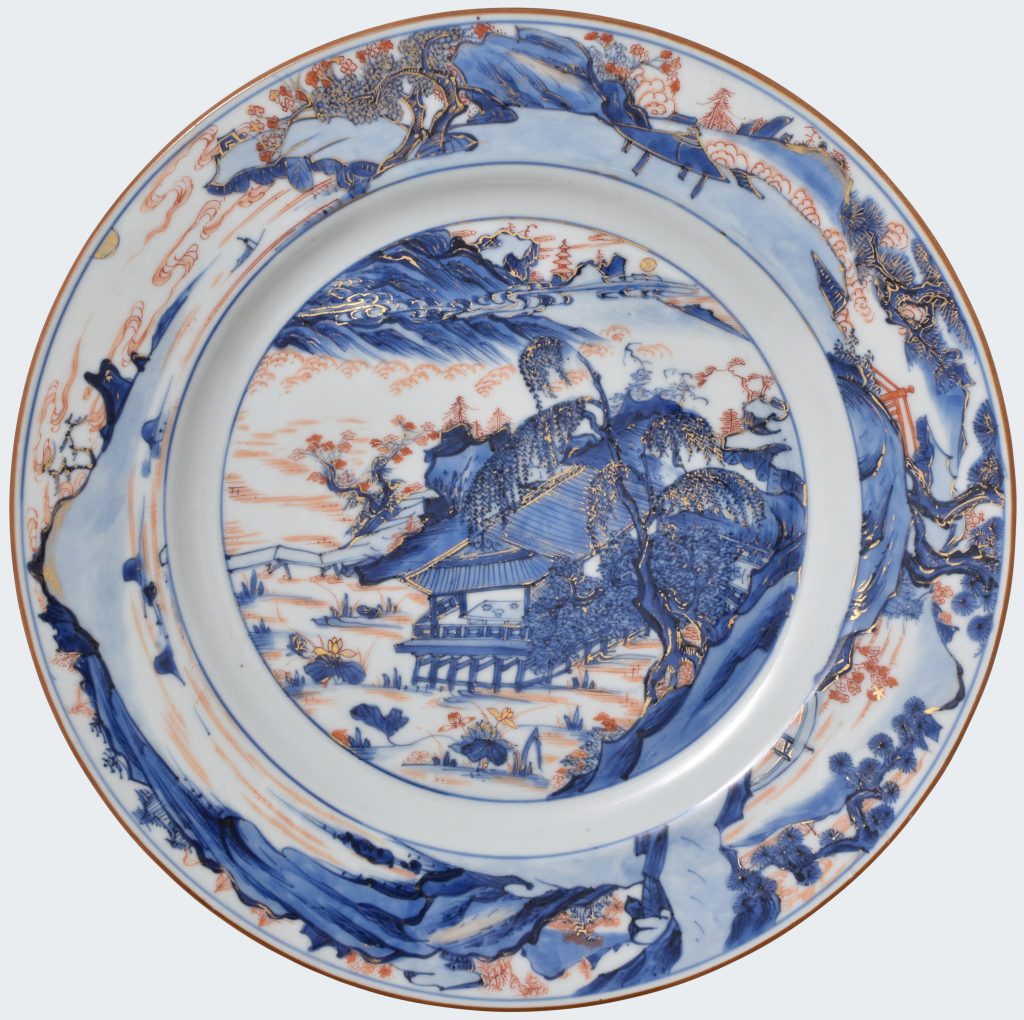
Decorated in underglaze blue, iron red and gilt, with a landscape to the center, and a continuous landscape scene on the rim.
A Chinese famille rose mandarins pattern dish. Qianlong period.
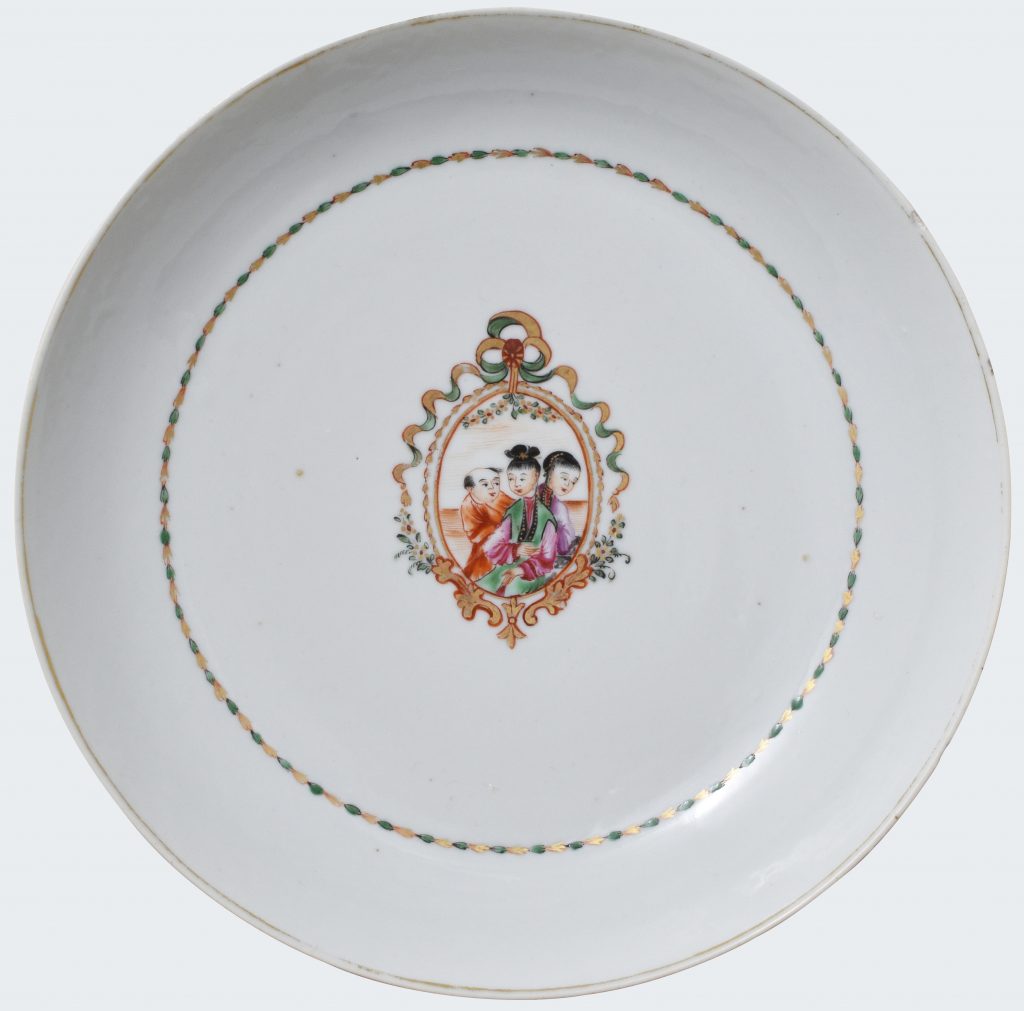
Decorated in the famille rose palette with a medallion with mandarins.
A Chinese ewer decorated in the Imari palette. Kangxi period
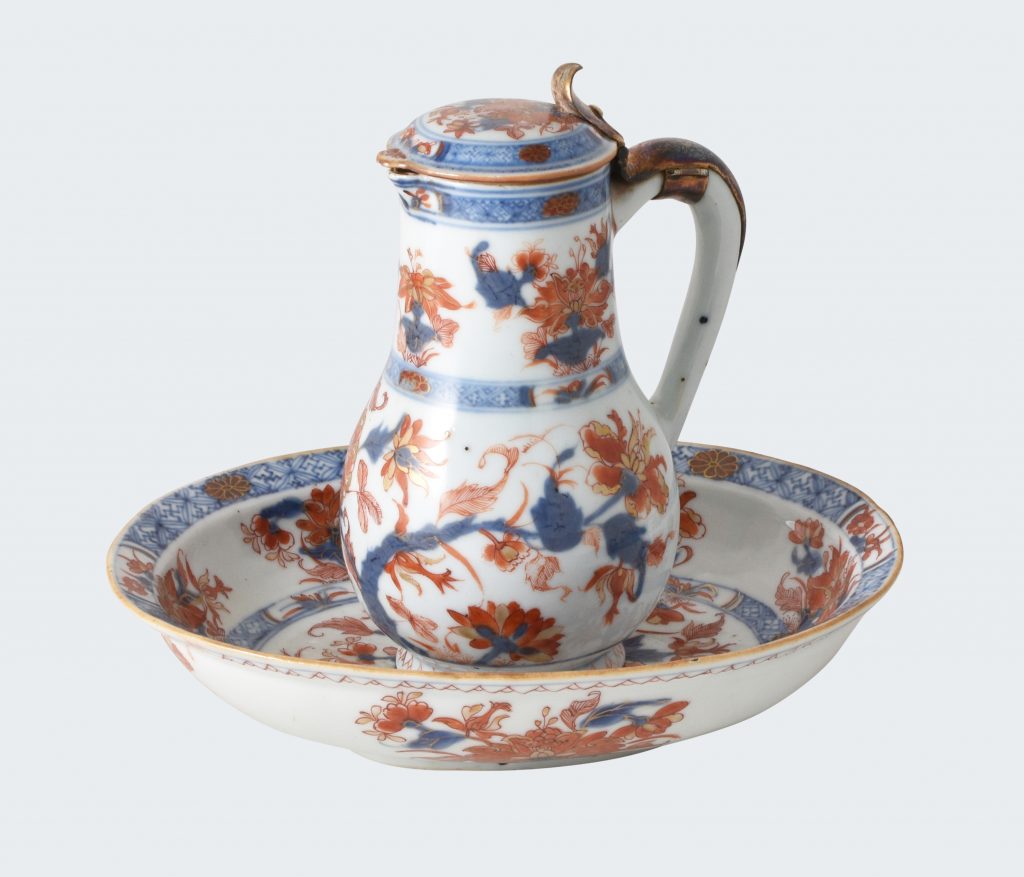
Decorated in the Imari palette with flowers.
A Chinese famille verte-imari dish decorated with European figures. Kangxi period
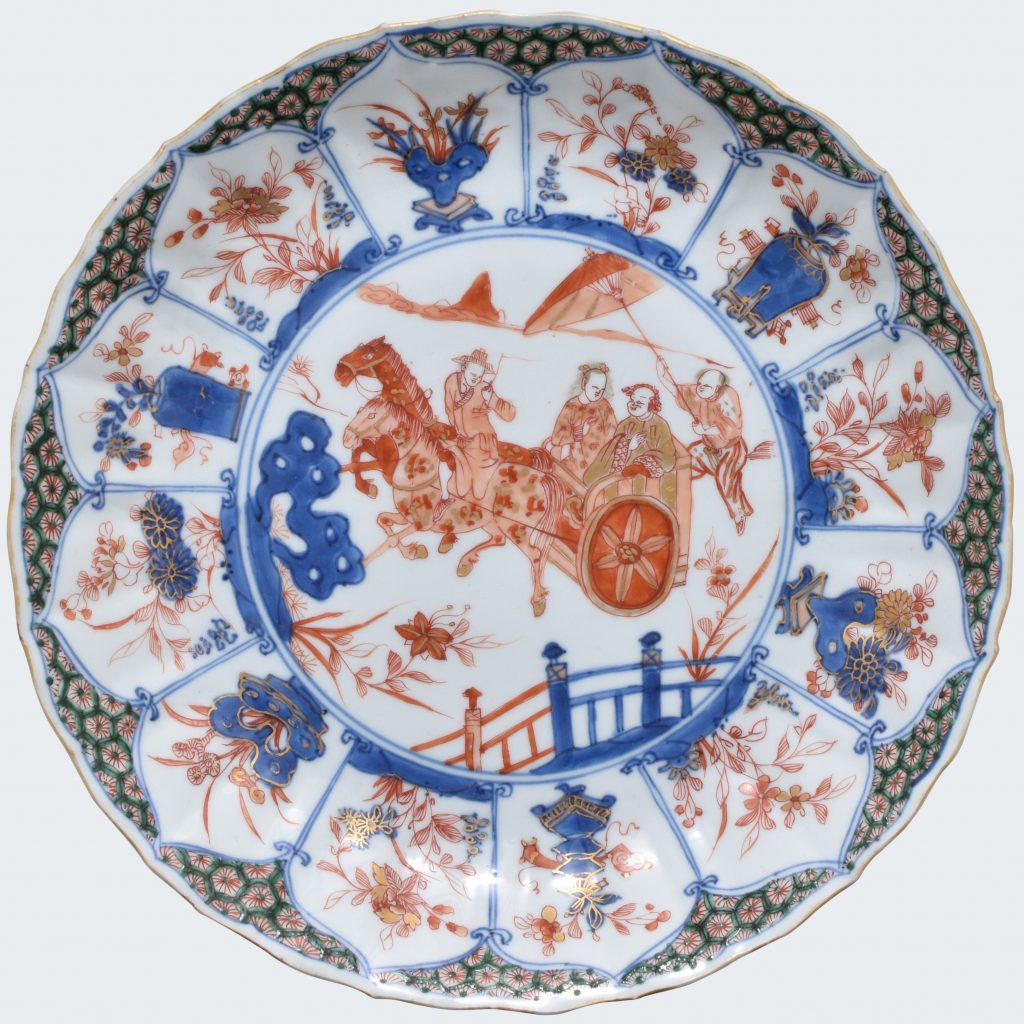
The center painted in tones of iron-red and gilt with two westerners riding in a Chinese chariot pulled by spotted ponies, an attendant shielding them with a parasol and a lattice-fence in the foreground, all within a petal-molded border reserved on a verte cell-diaper ground.
A large Chinese armorial dish for the Dutch market (van Gellicum). Kangxi period
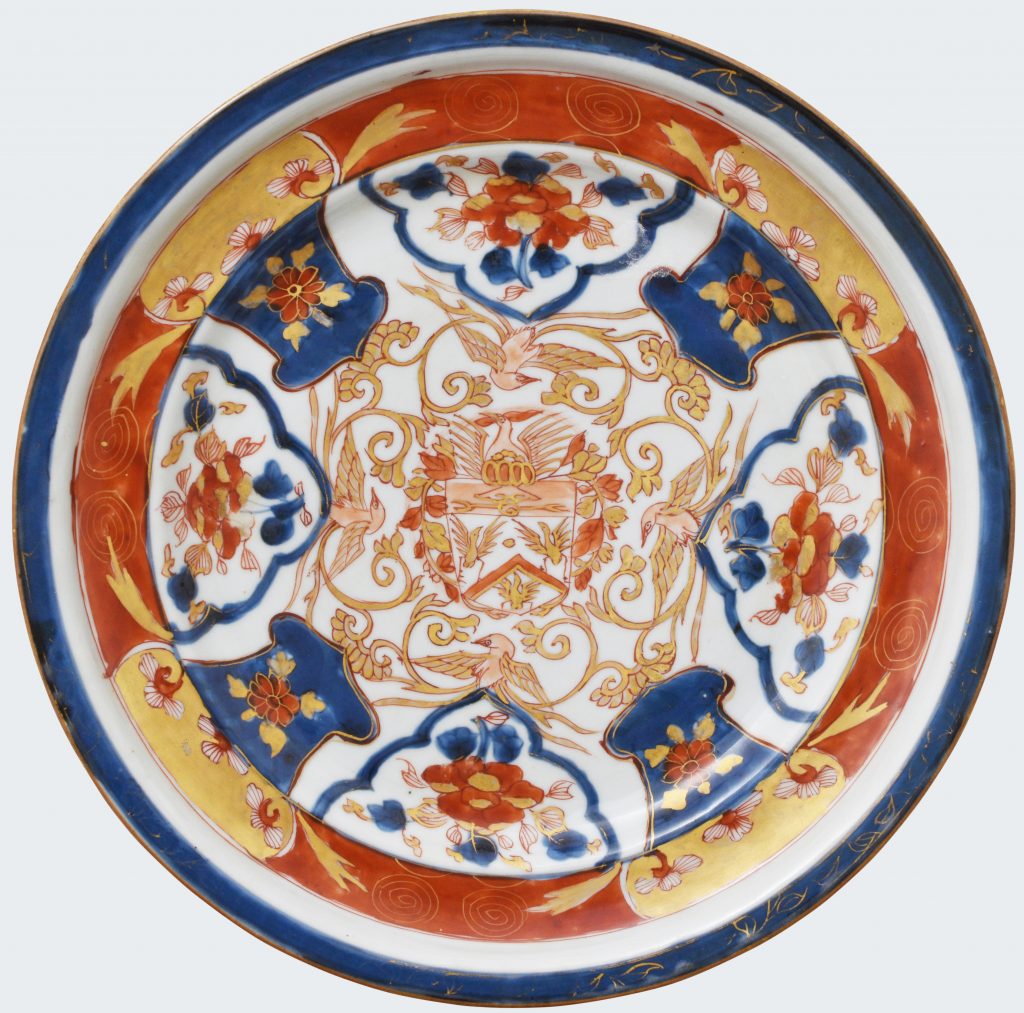
Decorated in the imari palette with the coat-of-arms of the van Gellicum.
A large Chinese Imari vase and cover decorated with a pair of phoenix. Yongzheng period
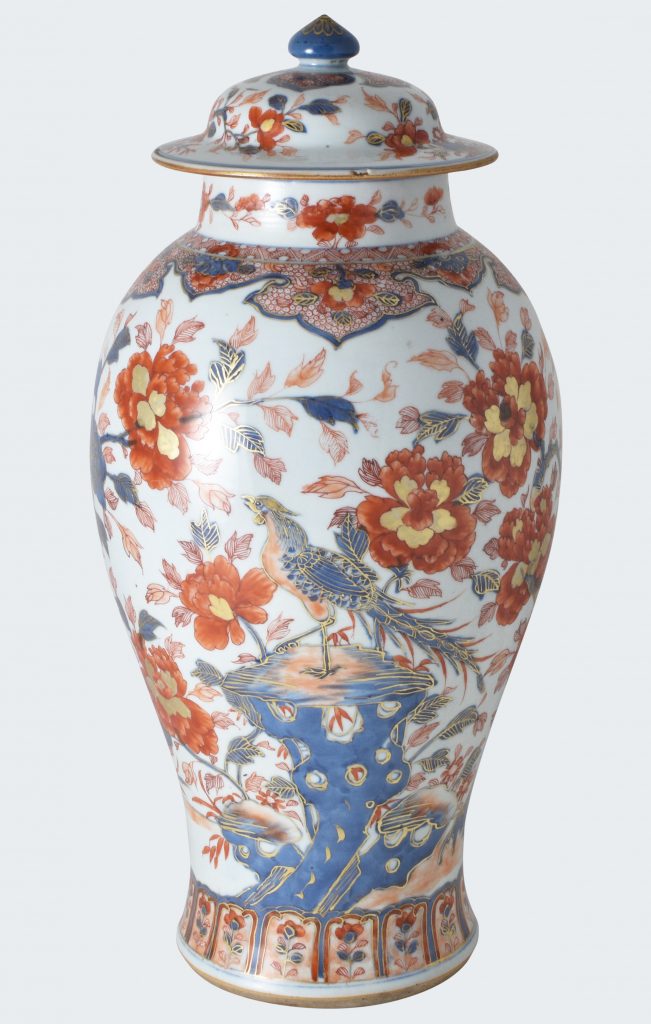
Baluster-shaped with swelling shoulder and short neck ; the cover a shallow dome with spreading rim, the edge glazed brown, with button knob in blue. Painted with a pair of pheasants perched on blue rocks among flowering peonies, with a frieze of lappets with peony blooms above, lotus-petal panel border below and peony sprays round […]
A massive Chinese Imari ovoid jar and cover decorated with pheasants. Early 18th century
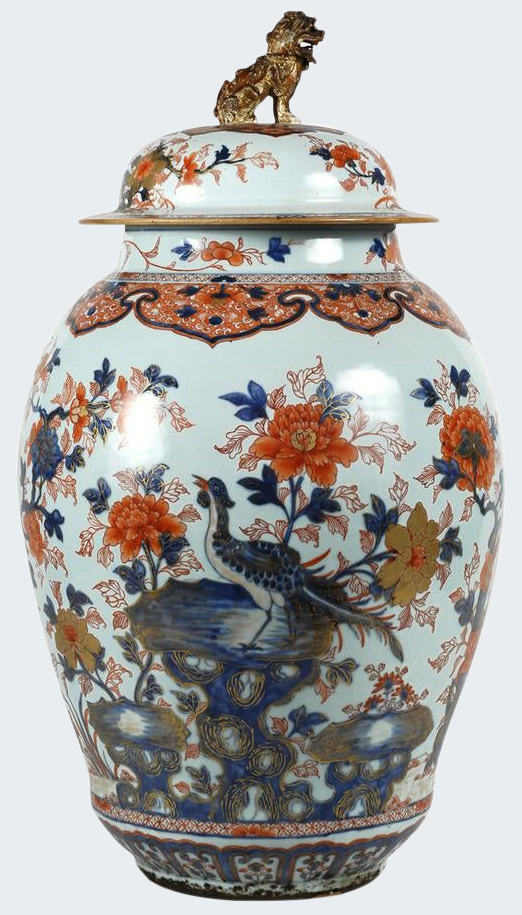
Of baluster form, enameled in the imari palette and gilt around the exterior with a continuous scene of a pair of pheasants perched on elaborate pierced rock work issuing branches heavy with flowering peony, pomegranate blossom, chrysanthemum, and peach blossoms between a lappet border around the base and the shoulder with a deep band of pattern-filled, […]
A Chinese Imari bottle decorated with a Chinese landscape. Kangxi period.
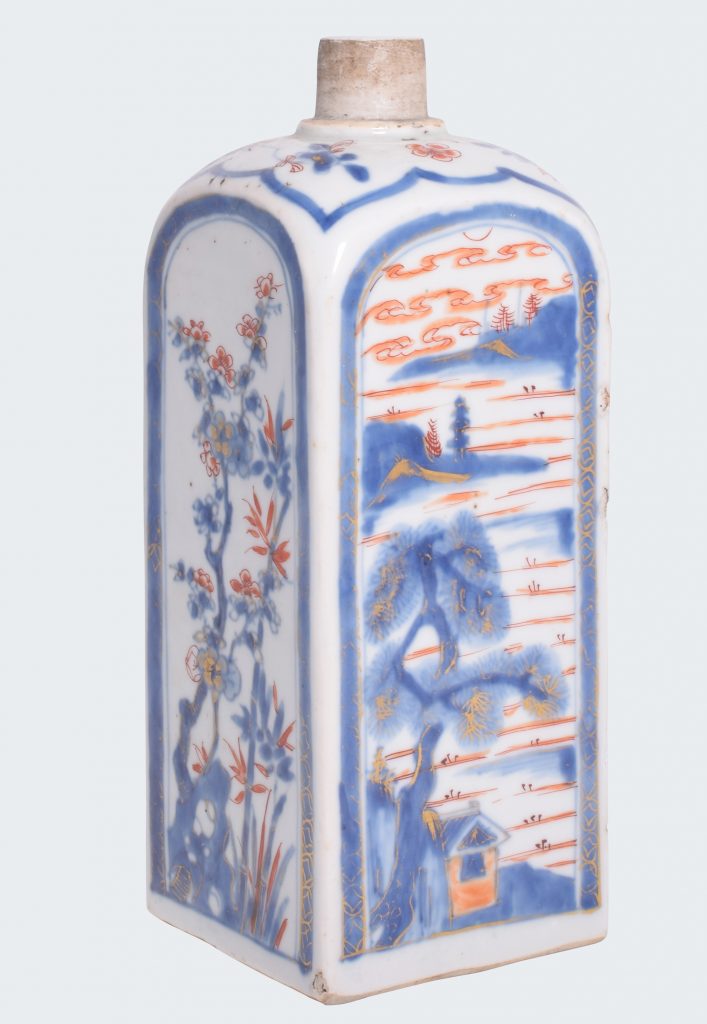
Decorated in the imari palette with Chinese landscape.
A Chinese Imari teapot decorated with flowers. Kangxi period
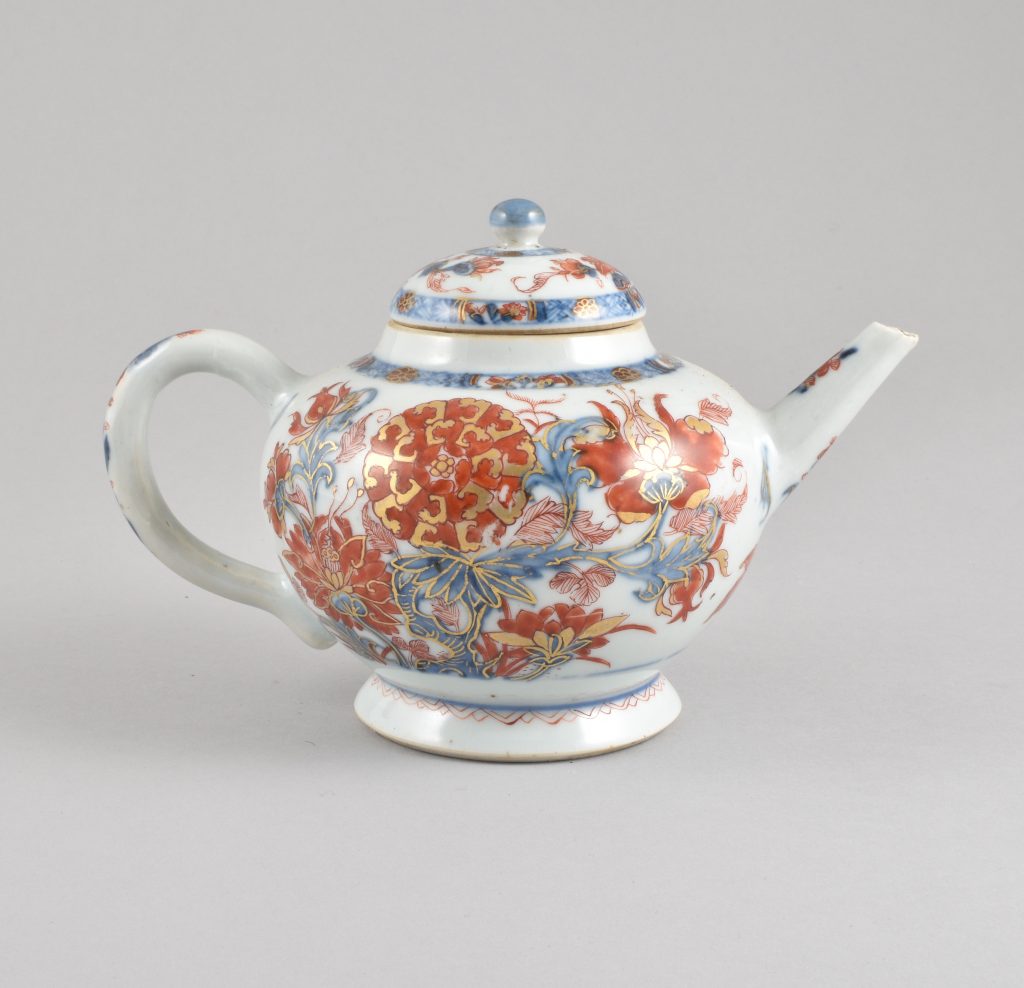
Decorated in the traditional “imari” palette with flowers.
A Chinese armorial dish decorated in the imari palette for the English market (Fellowes quartering Coulson). Kangxi period
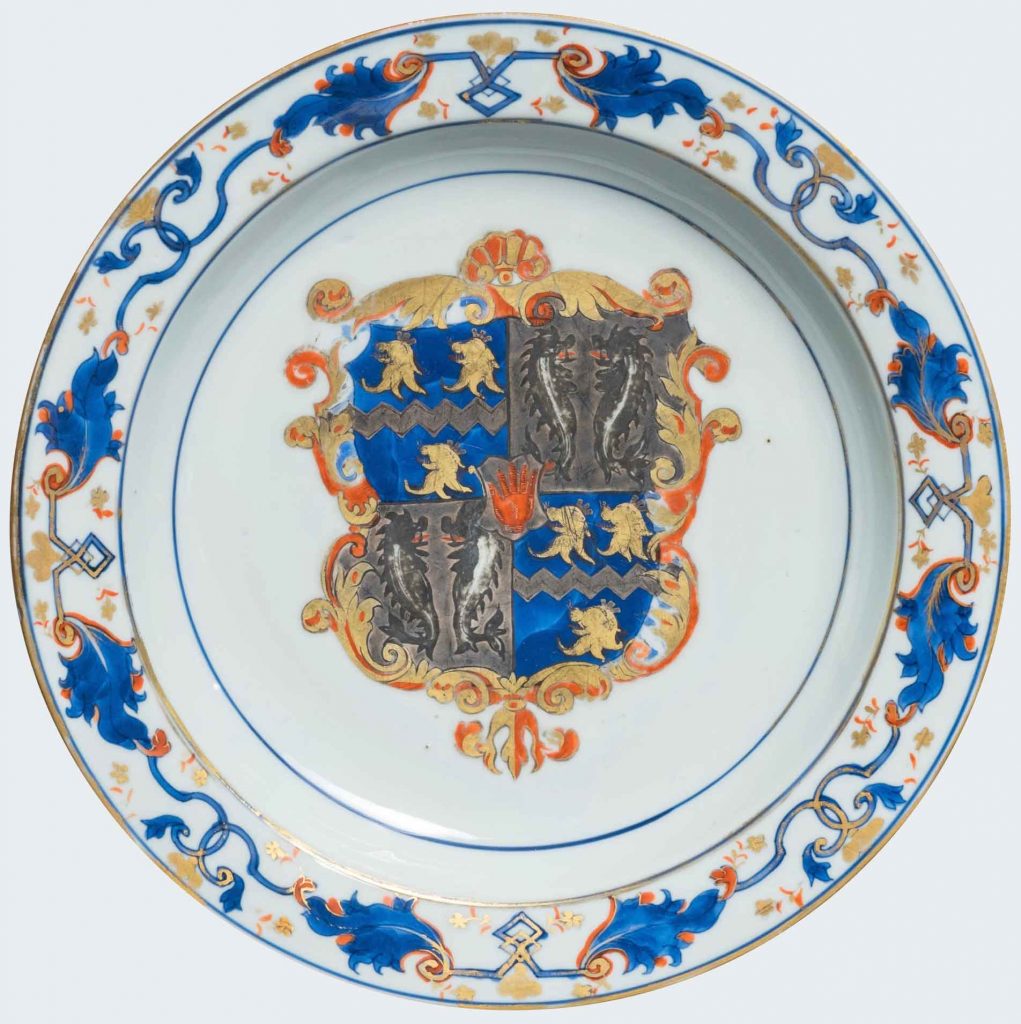
Decorated in the imari palette, the arms of Fellowes quartering Coulson.